RISING DAMP
RISING DAMP
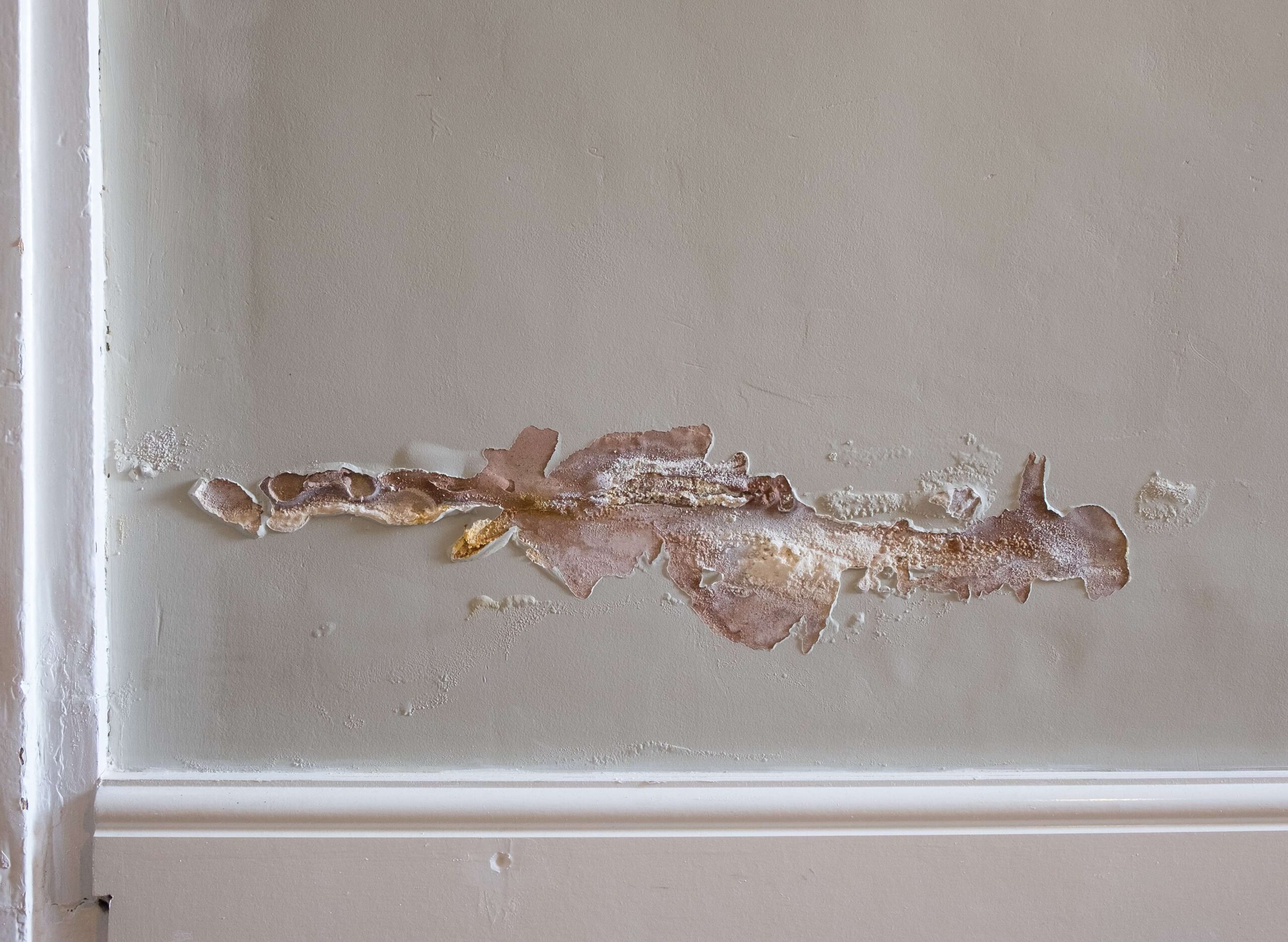 If you’re experiencing any symptoms of rising damp, we advise that you take action asap. Rising damp can be caused by a number of things, such as improper drainage or plumbing, damaged gutter work, condensation or floods. Additionally, if your home lacks a proper installation of a DPC or has an inadequate one due to its age or by incorrect installation, then rising damp may also occur.
If you’re experiencing any symptoms of rising damp, we advise that you take action asap. Rising damp can be caused by a number of things, such as improper drainage or plumbing, damaged gutter work, condensation or floods. Additionally, if your home lacks a proper installation of a DPC or has an inadequate one due to its age or by incorrect installation, then rising damp may also occur.
People often incorrectly diagnose rising damp and treat it with methods that make the problem worse.
Rising damp can cause respiratory problems, skin irritation, and vision trouble. If you think you have rising damp in your home, get help from a professional as soon as possible.
Call our specialists at London Damp Specialist to book a survey and understand if you have rising damp. Simply call 0207 305 5997.
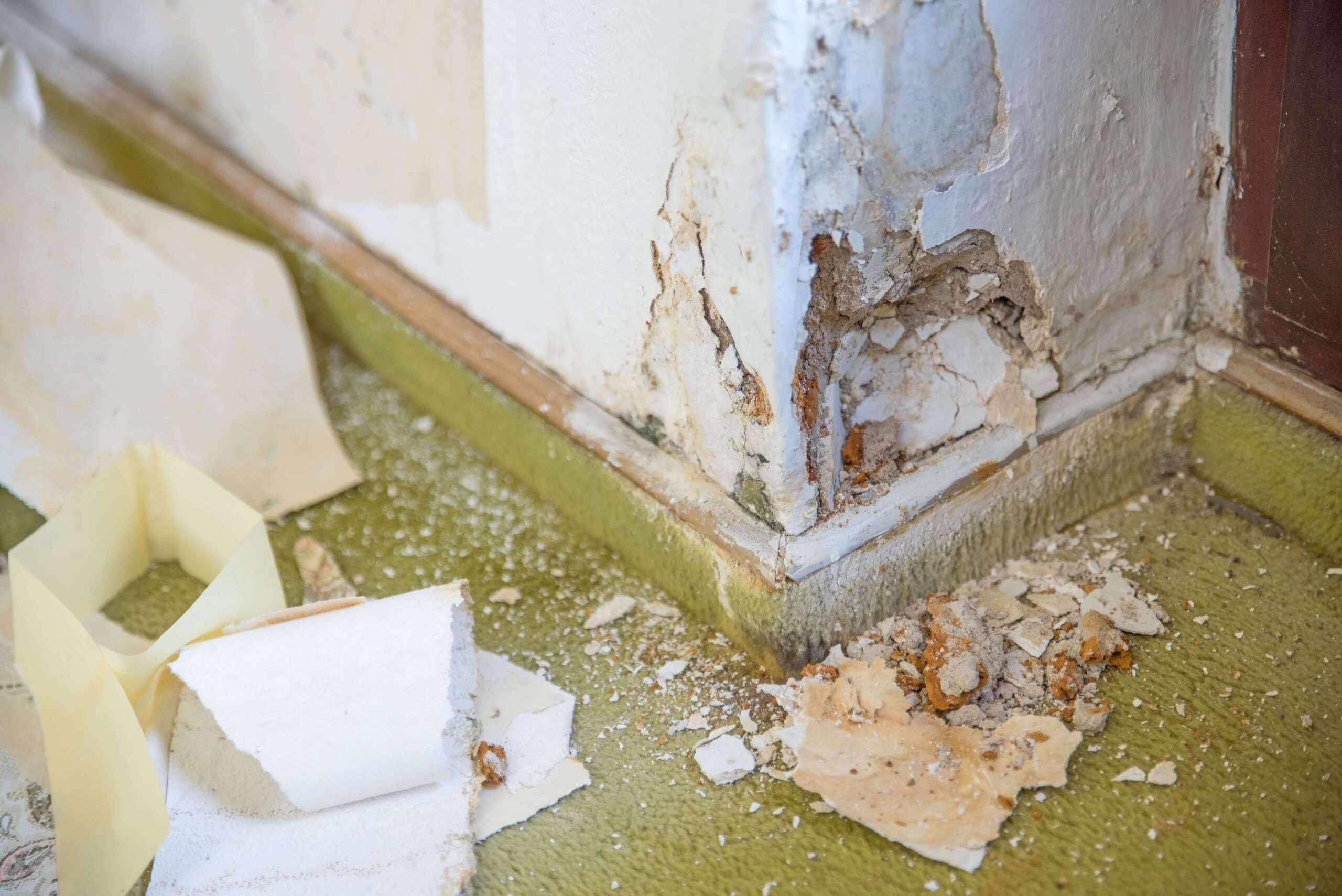
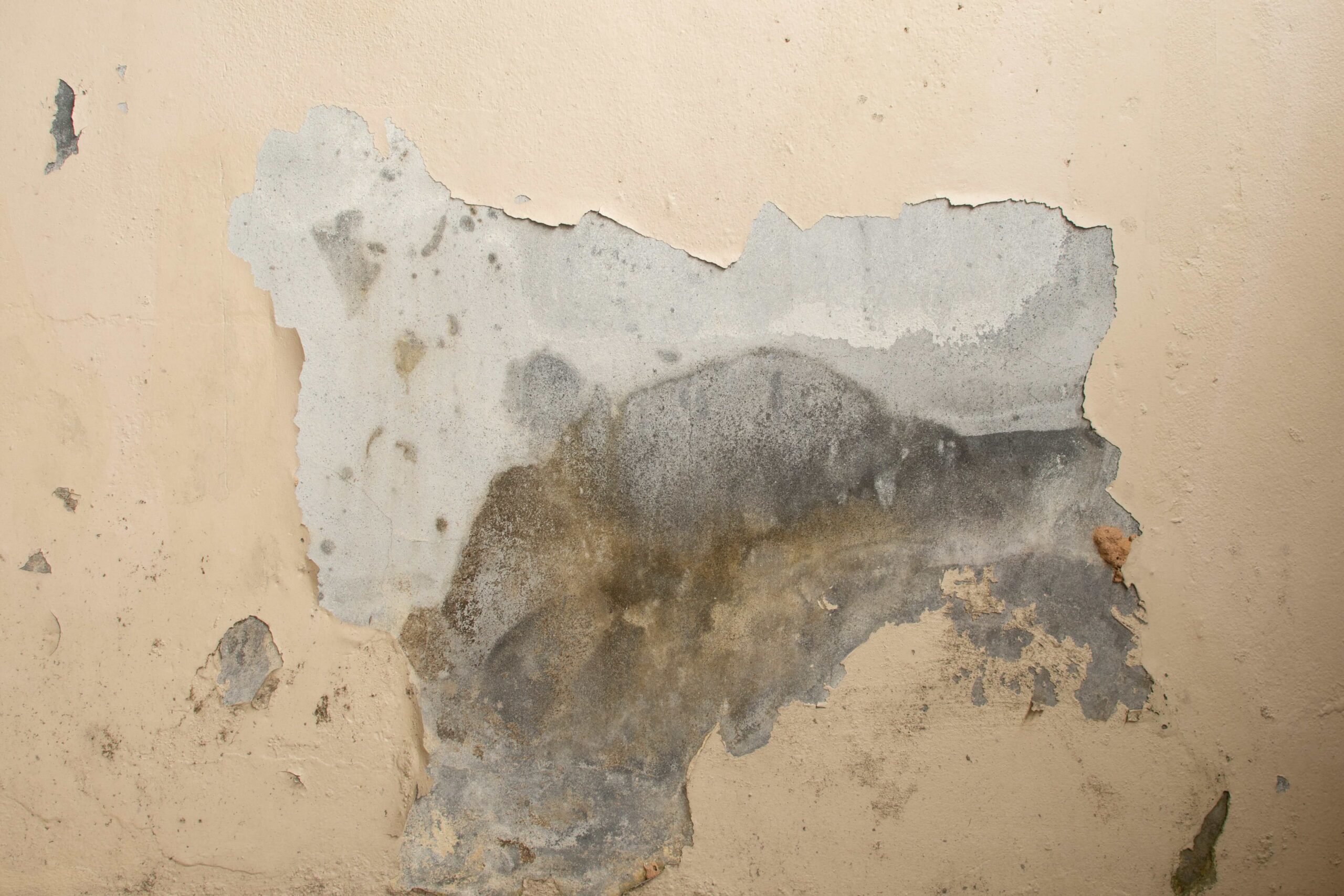
WHAT ARE THE SIGNS OF RISING DAMP?
You can usually tell if you have rising damp by certain visual cues, such as:
- EFlaking paint
- EBubbling plaster
- EBlown plaster
- EPealing wallpaper
- ECorner beads rusting
- ESwollen MDF skirting
Additionally, you can measure the moisture content in the wall with a “moisture meter”.
The easiest way to tell if your house needs rising damp treatment is by a moisture meter reading and visual cues like a tide line or yellowish, brown stains on the wall extending up to 1m from the skirting board. You may also notice some powdery salt deposits around. If you’re unsure, a misdiagnosis could lead to wasting time and money associated with this problem. To prevent future occurrences of rising damp, install a Rising Damp-Proof Course in your property.
There are many factors that can affect the lifespan of a building, and one of the biggest culprits is dampness. Rising damp occurs when ground water rises up through the pores in the wall by capillary action. This retained moisture then evaporates through the permeable wall, leaving behind soluble salts from both the building materials and the source. The salts let behind are then settle as salt deposits on walls after emitting out through the plaster.
If a paint job is defective and not allowing evaporation, then the salt concentration will increase and result in chunky, crystalline deposits that look like flowers. Salt deposits will form on the surface, if evaporation occurs within the building material.
Common causes that influence moisture movement upwards are:
- EThe deterioration of the damp course
- EUse of slopes without proper plumbing or drainage
- EAs well as flood catastrophes.
If a building doesn’t have a damp-proof course, which is installed to prevent moisture from seeping in. Or if the present one is too old or installed incorrectly, then rising damp will occur. When there’s another structure close by or leftover building materials that are touching the wall of the affected building, it provides a way for moist air to move from the ground and over the (ineffective) damp-proof course, causing severe damage to walls.
In addition, if the neighbourhood does not have a damp-proof course or if it is located higher than usual, moisture can move from the neighbouring area into a new home and cause rising damp. Oftentimes, rising damp is misdiagnosed, and individuals may use treatments that they do not need, which could end up causing more issues down the line.
- There can be health implications associated with damp such as those caused by mould and dust mites, which can trigger allergies or aggravate pre-existing medical conditions.
WHAT IS THE BEST TREATMENT FOR RISING DAMP?
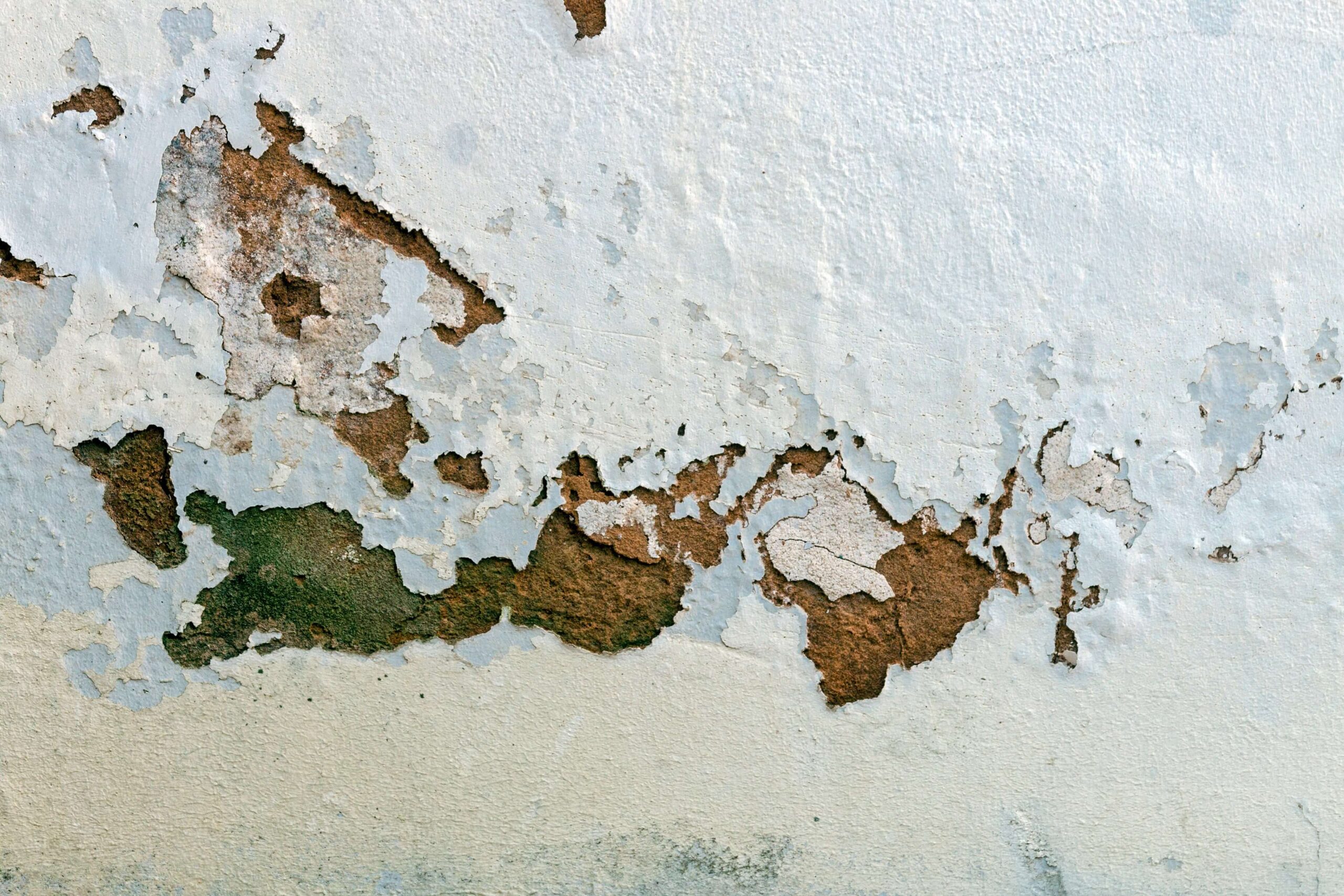 To treat rising damp, you must first find the initial cause of the problem with the damp-proof course and fix it. Only then can you start repairing any damage to your property that may have been caused as a result of the problem.
To treat rising damp, you must first find the initial cause of the problem with the damp-proof course and fix it. Only then can you start repairing any damage to your property that may have been caused as a result of the problem.
Although it might be tempting to temporarily conceal rising damp by using a damp-proof undercoat covered by paint, this should only be done as the last step. First, determine what is causing the issue, then address that root problem. By taking this approach— first solving the cause of the problem and then hiding it with an undercoat and fresh paint — the wall will look newer for longer since the peat won’t seep through any cracks or crevices.
A damp-proof undercoat won’t prevent future rising damp problems because it is not potent enough. To fix the problem, you must first repair the damage and then apply an undercoat and paint. If you do not get to the real root of the matter, then you will most likely have to repaint your wall more frequently than every few months, and chances are that things will only get worse as time goes on.
Rising damp is a problem that does not go away without treatment. If you think your home might have rising damp, it is best to get the problem inspected by a damp professional as soon as possible. They will check your DPC to determine what has happened, what’s gone wrong and what kind of rising damp remedy is needed. In some circumstances, this could involve replacing the entire DPC, while other problems may be more easily solved by simply removing any structures or objects that are blocking the DPC and causing it to bbridge.
BEST TREATMENT FOR RISING DAMP: BRIDGED DAMP-PROOF COURSE
A damp-proof course that has been bridged is a common issue in many homes, but the good news is this type of problem is often one of the easiest to fix. If your damp-proof course is generally functional, you might not even need to install a new one. But before treating the problem, a professional should inspect your property and identify anything blocking or bridging the current damp-proof course so it can be removed.
Usually, this is because of structures blocking the house or elevated ground from gardening activities. If you remove or lower these, it’ll be more difficult for moisture to access the damp-proof course and solve your problem. You can then focus on treating any rising damp that may have appeared inside your property without worrying about it coming back.
BEST TREATMENT FOR RISING DAMP: NEW DAMP-PROOF COURSE
If you suspect your property of suffering from rising damp, in some cases the only solution may be to install an entirely new damp-proof course. This job should always be carried out by a trained professional, as any errors can lead to bigger issues down the road – not to mention being frustrating and a waste of money.
In some cases, it might be best to get a new damp-proof course installed in your property. You will definitely need one if your property doesn’t have one already. Though they don’t last forever, and may become less effective over time as they wear down. If you believe your damp-proof course is old or needs replacement, this might be the root of your problem. A common issue, rising damp is usually caused by an ineffective DPC that can’t do its job as well as it used to.
If there are objects around your home that the damp-proof course needs to be placed higher over, then a new one will need to installed further up the wall so moisture cannot penetrate. If the damp-proof course in your wall is installed lower than that of your neighbour’s, you may need a new one to prevent rising damp.
TREATMENT FOR OLDER HOMES WITH RISING DAMP
Older homes are sadly more likely to experience rising damp. This is often because of an ineffective or completely absent damp-proof course. If you’re trying to deal with this problem in an older home, the first step is checking for a damp-proof course. Even if you find one present, it might not work well due to damage sustained over time. In this case, you should replace it as soon as possible so that future issues can be prevented entirely.
While it is more difficult to install a damp-proof course in an existing property as opposed to during the construction of a new build, an experienced professional will be able to ensure that your older home has a reliable and effective damp-proof course. This is typically done by injecting a water-repellent chemical into the existing brickwork of the property.
RISING DAMP INSIDE THE HOME: THE BEST TREATMENT
Not only is rising damp unsightly, it can also cause a lot of damage to your property. After you have found with issue and dealt with what has been causing the rising damp to appear, there may be more you need to do to get your home to get it back into an acceptable living condition.
Rising damp is when moisture goes up the walls and is eventually pulled down by gravity. Discolouration in the paint or wallpaper, as well as peeling, are signs of rising damp. If left untreated, rising damp can cause mould to form on the walls.
If the rising damp in your property is severe, you might need to re-plaster the affected walls before continuing any further work. You shouldn’t try to just paint over rising damp and hope that solves the issue. It doesn’t matter if you think you caught the issue early on and there’s not a lot of damage indoors; don’t just cover it up!
The least you can do is use a damp-proofing undercoat on the walls before painting. Let it dry completely because it works as a blockade to not only make existing moisture in the walls evaporate but also stops more from coming through. If there’s mould, wash down your walls with an anti-mould solution then wait for it to dry completely before adding undercoat and paint.
Standard emulsion paint works once the undercoat has been applied. But, if you want more protection against mould, consider a paint that includes anti-mould properties.
RISING DAMP TREATMENTS
Damp proofing is a process of waterproofing the walls and floors of a building to prevent dampness from seeping in. The initial damp-proof course (DPC) was a layer of material, typically 6 inches thick, that was installed on external and internal walls to keep moisture out.
If the damp-proof course is breached by building materials or debris, water can travel around the course and go up the wall. If there is an area near to the external wall that is higher than the DPC installed, water can travel up through that area and across to the wall, effectively creating a bridge. When dealing with rising damp, these factors must be taken into consideration.
If you’re noticing signs of rising damp, don’t worry! There are some easy treatments that can extend the life of your wall. The damp proofing process involves removing affected plaster / bricks and replacing them with new materials, which are waterproof.
There are several ways to treat rising damp, which include:
- NPlaster removal up to 1.2m high
- NInjecting chemicals as a DPC
- NAdding a salt neutralizer
- NApplying tanking slurry
- NUsing waterproof render
- NPuttings skim coat plaster on top
PREVENTING RISING DAMP
In order to always prevent rising damp, you must make sure to regularly inspect your damp-proof course for any faults or deterioration. If you want to avoid it altogether or have seen early signs, this regular check will ensure that the issue does not persist. Additionally, before moving into a new property, always confirm that there is a valid damp-proof course in place by checking the homebuyer’s survey results. The less time that passes without a damp-proof course in your home, the lower the chance of rising damp. Similarly, if any of your neighbours have their courses updated or installed, stay up to date on these changes too since a higher neighbour installation could mean a greater risk for you.
A professional should always handle rising damp treatment since the issue involves the damp-proof course. Sometimes, fixing rising damp requires removing an obstacle that’s blocking the course while other times it may need a brand new installation of the damp-proof course.
frequently asked questions
Can rising damp affect both old and new buildings?
Yes, rising damp can affect both old and new buildings. However, it’s more common in older buildings due to the lack of damp-proofing measures during their construction.
What are the potential health risks associated with rising damp?
Rising damp can lead to the growth of mould and mildew, which can cause various health issues such as respiratory problems, allergies, and asthma. It can also exacerbate existing respiratory conditions.
Can rising damp cause structural damage to a building?
Yes, if left untreated, rising damp can cause significant structural damage to a building. It can weaken the building’s foundation, cause decay in wooden structures, and lead to crumbling or flaking of plaster and paint.
Does rising damp only affect ground floor levels?
Rising damp primarily affects the ground floor levels as it occurs due to water from the ground rising up through the walls. However, if left untreated, the dampness can travel upwards and may affect higher levels too.
How long does it take for rising damp to dry out once it has been treated?
The drying time can vary depending on the level of dampness and the type of treatment used. Generally, it can take anywhere between a few weeks to several months for the dampness to completely dry out after treatment.
Does treating rising damp involve removing and replacing affected materials?
In most cases, yes. Treatment often involves removing and replacing damp and damaged materials like plaster, timber, and sometimes bricks. This helps to prevent the recurrence of dampness.
How can I ensure that rising damp does not reoccur after treatment?
To prevent recurrence, make sure that your property is well-maintained and ventilated. Regularly check for signs of dampness and deal with any potential sources of excess moisture promptly. Also, ensure that the damp-proof course (DPC) is in good condition.
Does homeowner's insurance typically cover the costs associated with rising damp treatment?
This depends on the specific terms of your homeowner’s insurance policy. Some policies may cover the costs associated with treating rising damp, while others may not. It’s best to check with your insurance provider for clarity.
How high can rising damp go?
Rising damp usually affects the lower parts of the wall and can rise up to 1.2 metres. However, in severe cases, it can potentially rise higher.
Tools We Use
Our surveyors use state of the art equipment to detect moisture in a property:
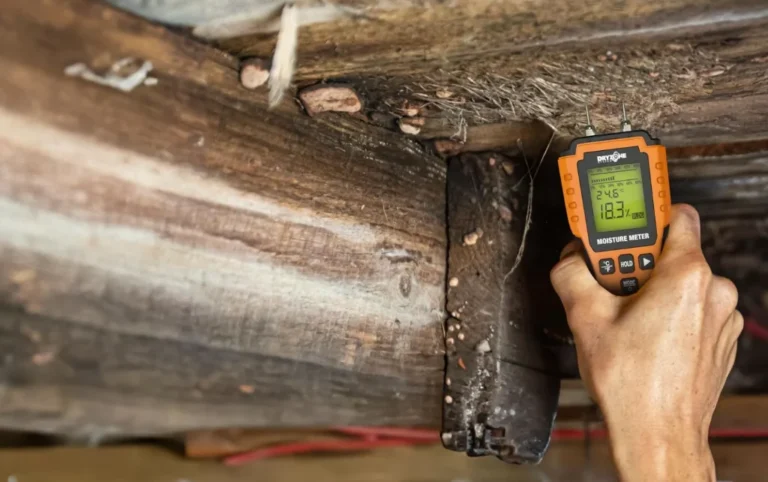
Damp meter
This device has multi-purpose use; it can identify problem areas, pinpoint sources of damp and monitor if areas are drying out over time. The meter can be calibrated for timber or plaster and there are two main types, namely pinned and pinless damp meters. The pins can be inserted into timber or mortar to accurately measure the moisture content within the material, while the pinless variety measures surface moisture.

Thermal imager (Infrared camera)
This is a device that locates potential areas of damp on walls, ceilings and floors, visualising temperature differences on the surface of materials. Damp areas are typically cooler than dry areas and this shows on the screen; Thermal imagery is primarily used for masonry diagnosis and is an indispensable piece of equipment for a damp surveyor.

Humidity tester
A device to measure the level of humidity in the air; the handheld device is very accurate and helps the surveyor to get an overall assessment of the moisture content in the air. If the surveyor is looking for mould, measuring humidity will show if mould could grow in that area. An integral device and one of the first tests to be carried out.

Borescope camera
This type of camera is very useful for looking at hard-to-reach places, such as wall cavities, under floors and to determine the wall structure in some building types. Also known as a pin hole camera, this device can detect leaks and is used on every survey to get a close-up of targeted areas and the surveyor can investigate an area with hi-res imagery.

Drone imagery
Used to inspect the exterior of a building, state-of-the-art drones bring hi-res close ups of the roof, guttering and upper walls, while it enables the surveyor to check for missing roof shingles. This saves time, which is a win-win for everyone and any issues can be investigated further. Every damp survey would include scanning the exterior with a drone, looking for defects and signs of damp, zooming in when necessary.

Ventilation airflow test
Ventilation is essential to reduce the moisture in the air and to determine the degree of airflow, the surveyor has a range of devices in their arsenal. Mould and mildew thrive in still, humid conditions and by generating an airflow, you can dry out the air, which helps to prevent dangerous fungi forming.
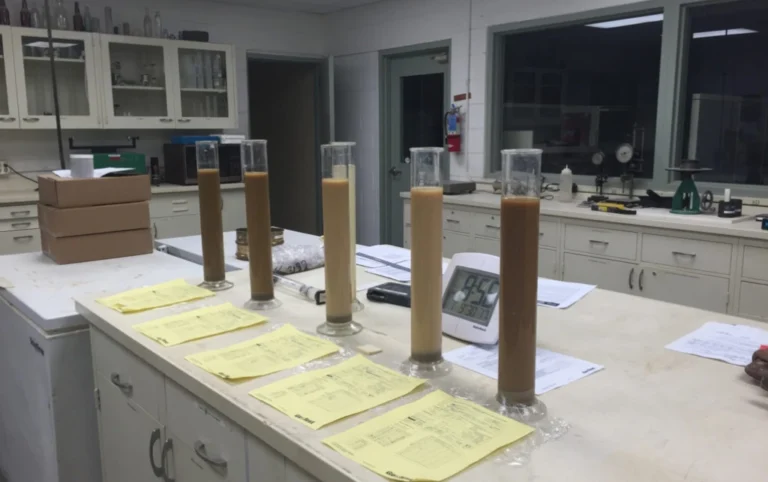
Lab analysis of plaster
An additional service of plaster lab analysis is available, with up to 10 plaster samples tested to prove moisture source. This is an accurate way to assess moisture in walls, with lab analysis of the samples.

Damp Survey Costs
We have three levels of Damp Survey as well as an extra lab analysis of affected plaster. You can choose from:

Level 1 Survey: £199 + VAT
This survey includes an inspection of all interior and exterior walls and floors for signs of dampness and leaks.

Level 2 Survey: £299 + VAT
This includes everything from Level 1, plus an examination of all wood structures and loft timbers for wood rot and woodworm.

Level 3 Survey: £399 + VAT
This survey includes the same checks as Level 2, with the addition of thermal imaging, air humidity testing, borescope camera, drone imagery and ventilation flow test.

Extra add on, Lab analysis of plaster: 299 +VAT
An additional service of plaster lab analysis is available, with up to 10 plaster samples tested to prove moisture source.
This is an accurate way to assess moisture in walls, with lab analysis of the samples.
Upon survey completion, the customer receives a detailed report within 24 hours.
